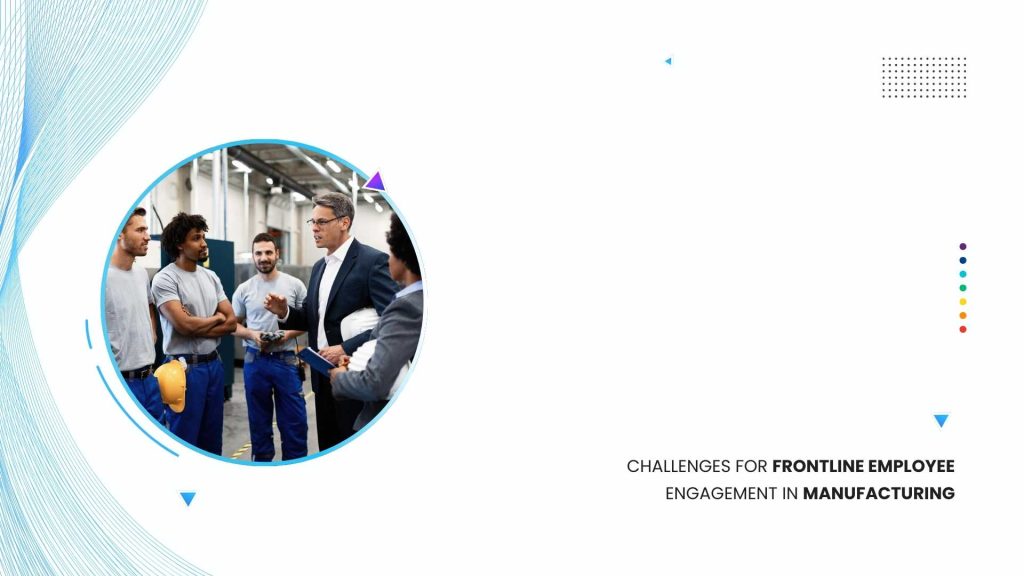Frontline employees are the backbone of the manufacturing sector, playing a pivotal role in ensuring smooth operations and productivity. However, they often encounter unique challenges that hinder their engagement and overall performance.
To cultivate a motivated and efficient workforce, it is essential to understand and address these obstacles. We delve into the specific barriers faced by frontline employees in manufacturing and explore strategies to support and empower this vital workforce. Read on to know how overcoming these challenges will lead to an additional productive and harmonious workplace.
Challenges for Frontline Employee Engagement
Outdated Policies & Practices:
Many manufacturing companies still rely on outdated policies and practices that can hinder efficiency and limit employee engagement. These legacy systems often fail to address the evolving needs of the modern workforce.
Safety Concerns:
Safety is a major issue in manufacturing environments. Inadequate safety measures and insufficient attention to workplace hazards can lead to accidents and injuries, significantly impacting employee morale and productivity.
Inadequate Training & Development:
Frontline employees often do not receive the ongoing training and development opportunities necessary to stay current with industry advancements and technological innovations. This lack of continuous learning can lead to skill gaps and reduced job satisfaction.
Lack of Communication:
Effective communication is critical for maintaining high levels of engagement among frontline workers. However, many manufacturing settings struggle with poor communication channels, leading to misunderstandings, misinformation, and disconnect between employees and management.
The Current State of Frontline Employee Engagement
The manufacturing industry is grappling with substantial challenges in attracting, engaging, rewarding, and retaining frontline employees. A recent study highlights the critical issues faced by manufacturers:
- 85% of manufacturers identified attracting and retaining a quality workforce as their top challenge.
- 40% reported having to turn down business opportunities due to workforce shortages.
- 70% acknowledged that the lack of talent negatively impacted their product delivery timelines.
- 55% experienced disruptions in the delivery of key manufacturing inputs.
- 75% stated that their production process timelines were adversely affected.
Employee Engagement Best Practices
Continuous Training & Development:
Implementing regular training programs and development initiatives ensures that frontline employees are equipped with the latest skills and knowledge. This not only boosts their confidence and competence but also enhances overall productivity.
Collaborative Problem-Solving:
Encouraging a culture of collaboration and involving employees in problem-solving processes can lead to innovative solutions and a greater sense of ownership and engagement among workers.
Communication Effectiveness:
Establishing clear and open communication channels helps in bridging the gap between frontline employees and management. Regular updates, feedback mechanisms, and open forums for discussion can foster a more inclusive and engaged workforce.
Social and Team-Building Activities:
Organizing social events and team-building activities can strengthen interpersonal relationships among employees, strengthen teamwork, and build a more cohesive and motivated work environment.
Conclusion
The Acumatica Cloud ERP system empowers multi-channel communication by integrating diverse business and collaboration applications on one centralized platform. This seamless integration facilitates better communication, collaboration, and efficiency, ultimately enhancing the engagement and productivity of frontline employees in manufacturing.

Vijay comes with a vast experience in ERP and enterprise solutions space with about 20 years of experience in various packaged application like Acumatica, SAP, Orion, Salesforce.com, SugarCRM and, SalesLogix.

